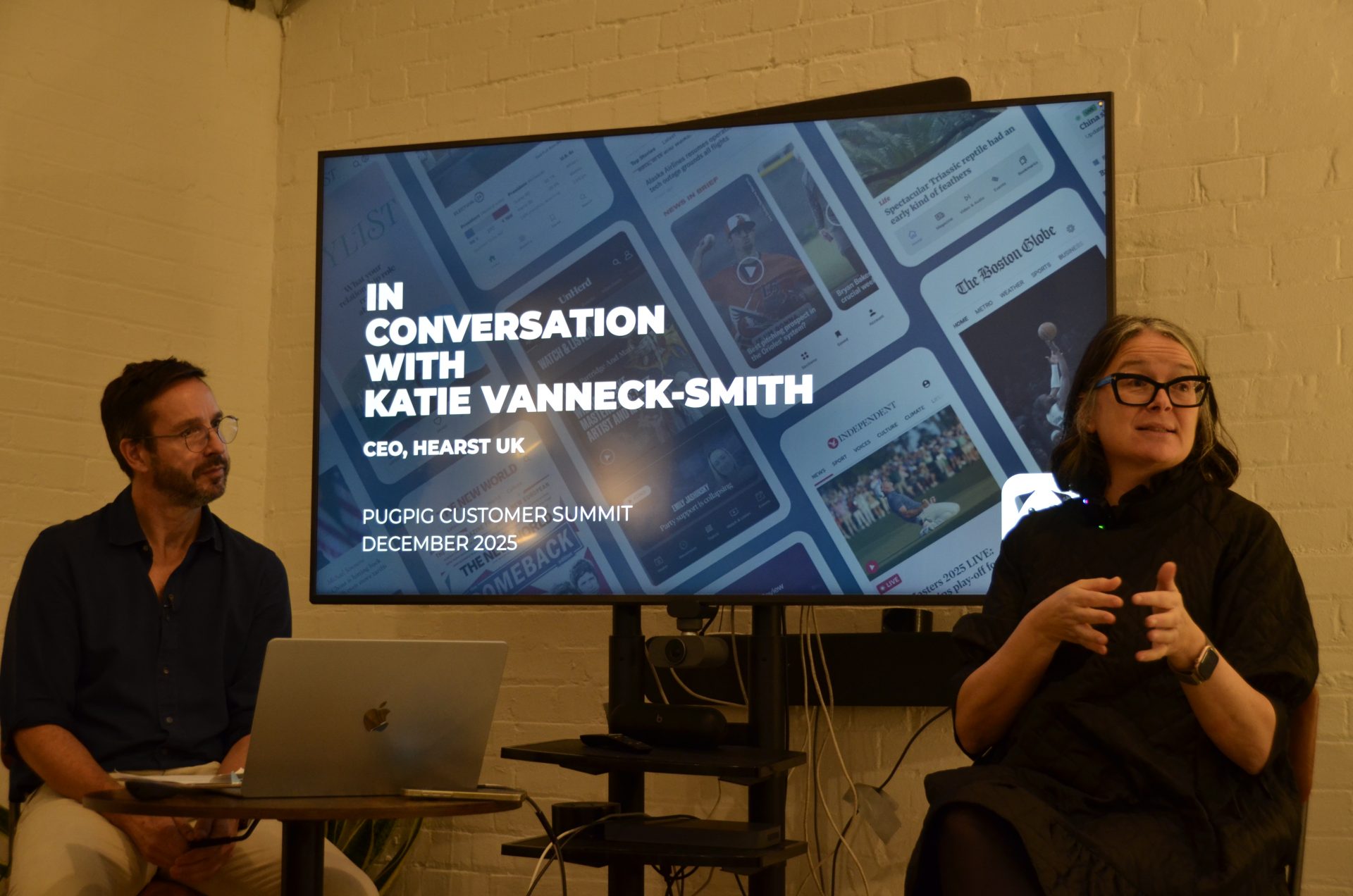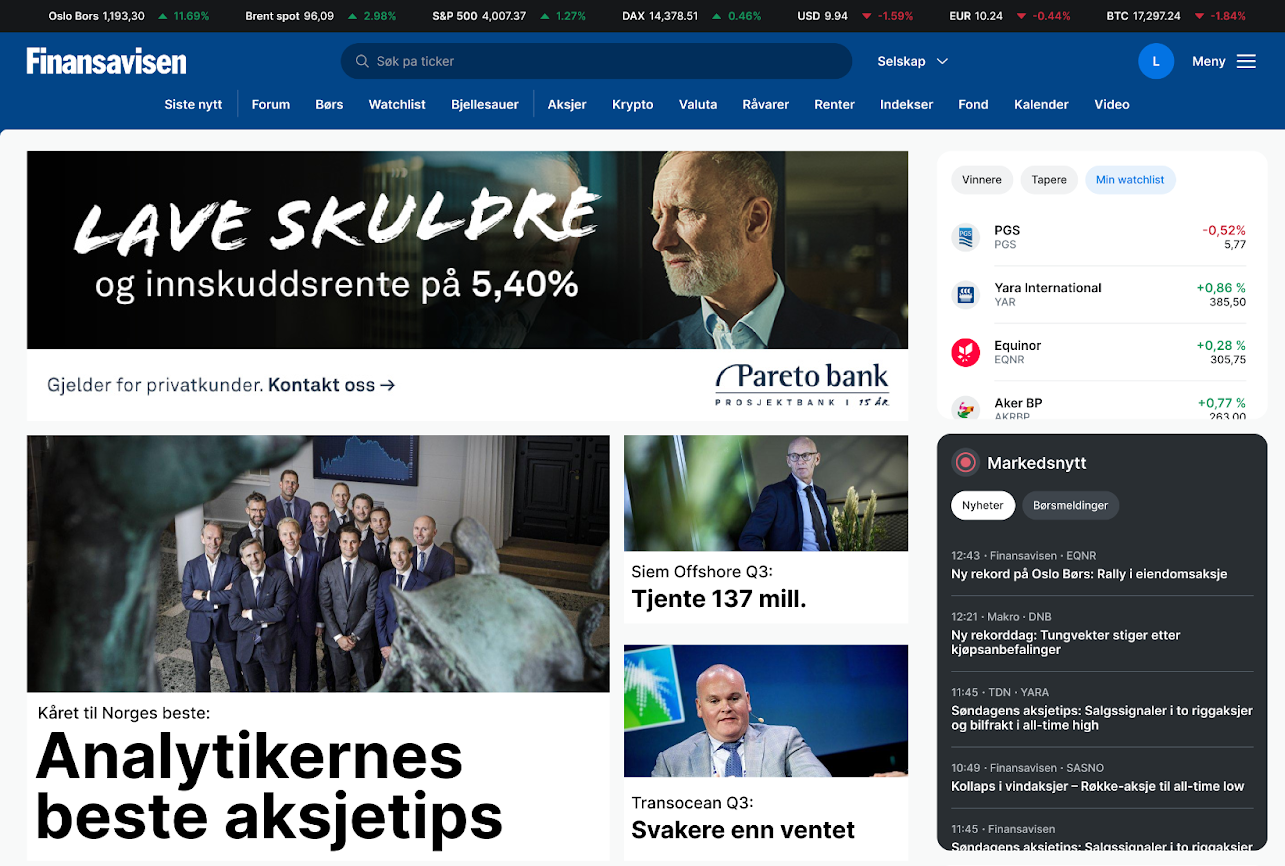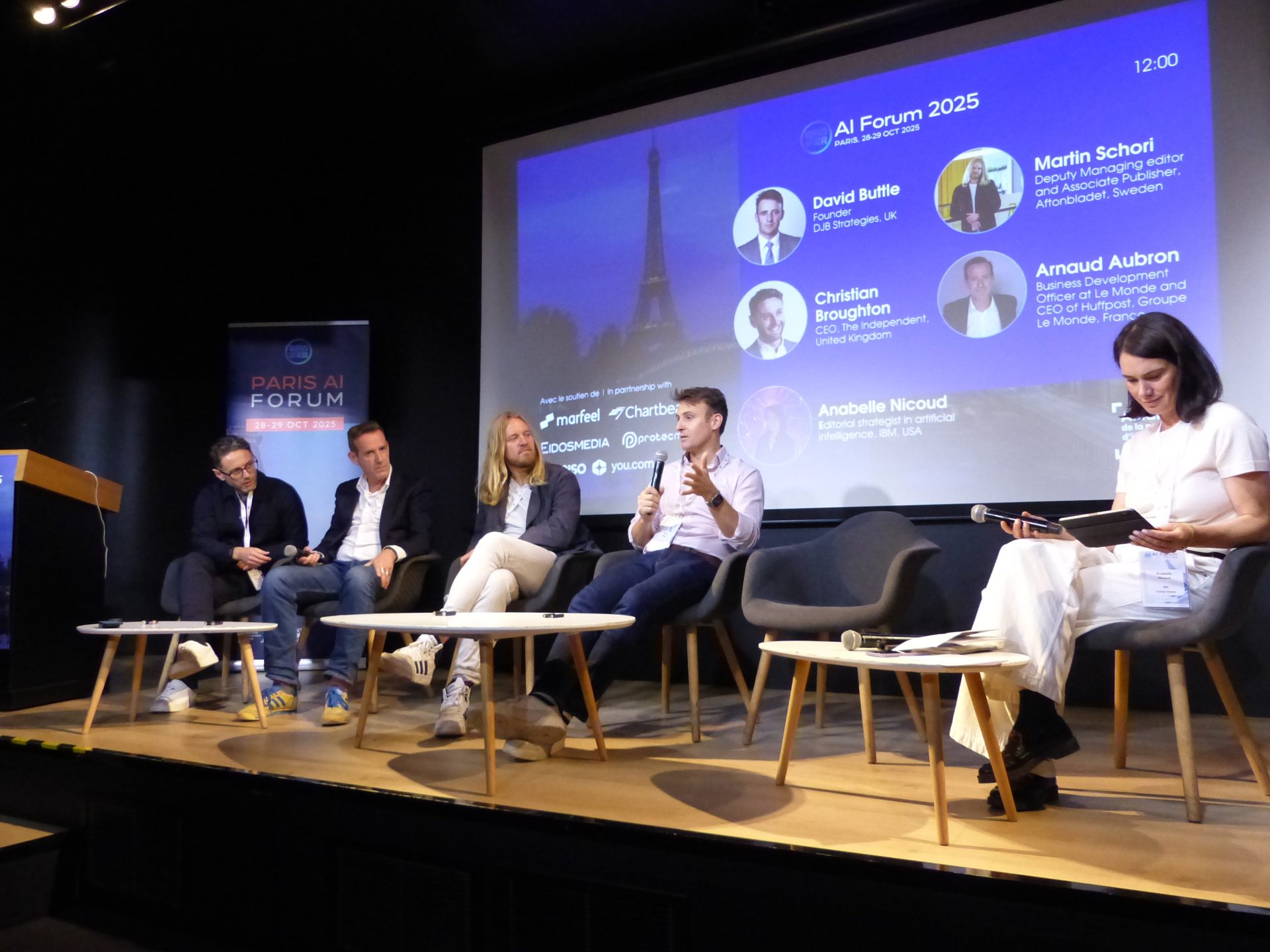
Newsletter
Newsletter
This week we reflect on the discussions from INMA’s Innovation Week in Finland.
11th October 2024

Our recently launched Mobile Matters community is growing, and if you are interested in or work in mobile publishing, you can join by filling out this short form. This week, we’ve talked about the tactics publishers in the community have used to drive downloads. Competitions got a good mention. I won’t say much more because we’ll cover that in a future Media Bulletin.
We have also added links to Media Bulletin editions covering topics related to channels on analytics, audio, community and revenue.
If you’re a publisher and want to join the beta group, please complete this short form, and you can also check out the Mobile Matters hub on our website where we’ll be building a library of case studies and strategies guides on mobile publishing best practices.
Advertising and subscriptions have been the two main pillars of newspaper revenue. Pressures continue on ad revenue with the decline of print and the loss of high-volume social referral traffic, and publishers have converted their most loyal audiences to digital subscriptions. They are looking for ways to optimise these two foundations of their business model while also looking for new sources of revenue to stabilise their businesses or power continued growth.
During INMA’s Media Innovation Week in Finland, participants discussed ongoing efforts in digital transformation, how to counter misinformation and how to fund it all by growing and diversifying their revenue streams.
In a sign of how varied these revenue initiatives are, INMA highlighted eight case studies across two themes of increasing ad yield and increasing direct revenue from readers across five categories: advertising, reader revenue, affiliate, bundles and content formats.
These case studies demonstrate that growth opportunities remain in advertising and reader revenue while new revenue streams can add resilience to media business models.
Publishers’ advertising business models have been under significant strain over the last two years, which drove consolidation in digital media and rounds of cuts at many publishers and broadcasters. Not only did CPMs stagnate between 2022 and 2023 despite a high rate of inflation but referral traffic from Facebook has halved to hundreds of news sites over the past year. Moreover, the negative effect of Google’s 2023 core updates has continued into this year as well.
This resulted in a decreasing number of users being monetised at a stagnant rate. The solution? Publishers have looked to either increase the engagement of current users or to improve the amount they can charge for an ad impression.
One approach to address the latter has been to build closer relationships between traditionally competing news brands. Ozone is a platform founded in 2018 by News UK, The Guardian, Telegraph and Reach. Its mission is to put control over advertising back in the hands of the publisher through its Smart Bidstream tool as well as a suite of other technologies, which address publisher-specific issues, such as targeting of hard-to-sell inventory, the presentation of ads and the level of control that publishers have over requests.
Since the dawn of the internet, many publishers have looked to advertising as the primary revenue driver, but too often, this has encouraged a race to the bottom and the consistent under-valuation of inventory which is too hard to scale. Ozone seeks to address this, and publishers have seen improvement in their baseline returns from 8 to 21%.
Publishers also continue efforts to optimise their own advertising operations. Swedish local media group, NTM AB, have restructured their advertising-related teams, to put “digital ads first,” Annie Lidesjö, NTM’s CEO told the event. They joined together teams that used to exist in silos and added automation and self-serve features that allowed them to build a more streamlined approach for ad sales. This helped them increase the sales of local display ads by 24% and native advertising by 5%, for an overall uplift of 9% in digital revenue from 2022 to 2023.
Meanwhile, Austrian publisher Russmedia, looked to the creation of new advertising products and recently launched a feature called “Premium Story”. The idea behind this was to highlight the benefits of an advertiser’s product through “emotional, relatable stories”, rather than technical details, according to INMA.
The model has had significant success, with a reach up 22 times higher than traditional campaigns and a click-through rate 12 times greater. The reason it was so successful was because it leveraged the core strengths of the publisher. Not only did it lean into Russmedia’s local focus but, as their MD, Georg Burtscher said, it “is built on what editors have been doing for over 100 years — telling stories about people. We’re using this knowledge not just to sell subscriptions, but also to deliver outstanding value to our advertising clients”.
Elsewhere, Norway’s largest local publisher, Amedia, looked to strengthen the traditional direct advertiser-publisher relationship. They partnered with Finnish beauty brand Lumene to evolve their advertising strategy. Their editorial team wrote sponsored content and shared stories to grow interest in the brand. They combined this with an “easy-to-order” free sample option. The real innovation of the approach was that they were able to use their editorial expertise, first-party data and direct relationship with the advertiser to deliver both ad revenue and an enhanced reader experience.
The strategy delivered value to the reader as well as the advertiser, with Lumene seeing a 101% increase in their sales after partnering with Amedia.
Several publishers spoke about how they grew direct reader revenue.
Some have tried to do both, grow revenue from readers and advertising. For example, VK Media has implemented a model to predict if an article will go viral. They used the data to decide whether the article would be used to drive conversions and sit behind a paywall, be opened up to drive ad revenue or a mix of the two. This allowed them to deliver significant increases in both revenue streams with ad revenues up 45% and reader revenue up an astonishing 970%.
Other publishers addressed the challenge of declining referral traffic by bolstering their relationships with audiences, a particular challenge across a portfolio of brands. One of these was the Irish Independent whose head of marketing, Lee Martin, looked at the challenges facing the media group through the lens of future-proofing. As a 100-plus-year-old publisher, the Irish Independent had built a portfolio of single-format brands, covering local news regions and specialisms. However, Lee noted that this was becoming increasingly hard to monetise. Last week we spoke about the new New York Times app, which put bundles at the centre of the content experience. The NYT has used the bundle as both a tool for further monetisation through larger subscription pricing and also as an important tool for retention. The Irish Independent has taken a similar approach. Like the NYT they have a distinctive primary brand and they have leaned into this to combine previously separate titles under one umbrella. Early results are positive, with an increase in the willingness of users to pay for digital content.
Another challenge in building direct relationships with audiences has been how platforms have become a primary way young audiences engage with news and other content. Money has followed audience attention, and Paul Brandenfeldt, head of sales at Bonnier News, told the conference that 65% of marketing revenue in Sweden goes to major tech platforms. Rather than produce content for platforms that allow them to monetise publishers’ audiences, Bonier News, the largest publishing group in the Nordics, decided to use vertical video on their own platforms, and they partnered with Zendesk, a customer support software company, to help accelerate the production of content.
The last INMA example came from Norwegian news company VG which built a bespoke product to service affiliate demand related to Black Friday, typically one of their most important events of the year. The revenue they earn on that day alone funds the annual salary of 10 journalists, said Maren Qvale, head of SEO and affiliate at VG. The product was designed with a focus on user experience at its core and whilst it contained significant manual effort to curate the best offers and ensure that all links are functional the results were extremely positive, with a 19% increase in affiliate revenue over the period.
The publishers that spoke at the INMA event have looked at a range of options to build more sustainable revenue. But they all rely on the same key component, building upon what news brands already do well. Whether it is working closely with competitors to build advertising ecosystems that can deliver scale alongside quality and control, building new advertising or affiliate products or developing new content formats to engage users, all the examples from the INMA event require publishers to be nimble and open to change but to also lean into the quality content that they’ve always produced.
Moreover, there are other ways to grow revenue. Most of the examples didn’t diversify revenue streams as much as they found ways to optimise the traditional revenue streams that publishers have long relied on, advertising and reader revenue. WAN-IFRA’s World Press Trends report released in 2023 found that ‘other revenue streams’ were growing faster than ads and subscriptions. This included events, contract publishing and e-commerce. Publishers estimated these new revenue streams would account for almost a quarter of their revenue in the coming year. By optimising existing revenue streams, publishers can build on to develop new ones, which will help them to transition from surviving to thriving again.
If you want to continue the conversation about tactics and tools to drive advertising and reader revenue, please, join the Mobile Matters community.
Here are some of the most important headlines about the business of news and publishing as well as strategies and tactics in product management, analytics and audience engagement.

Newsletter

Newsletter

Newsletter

Newsletter

Newsletter